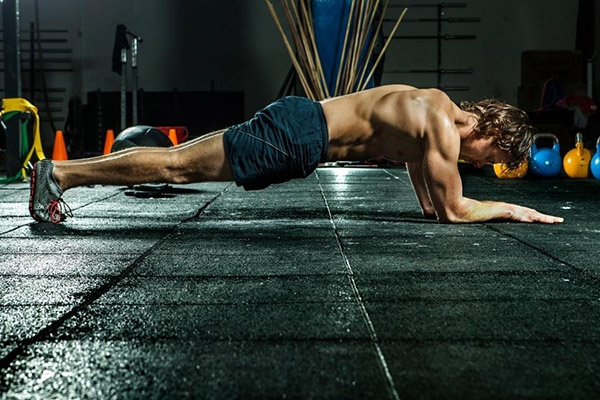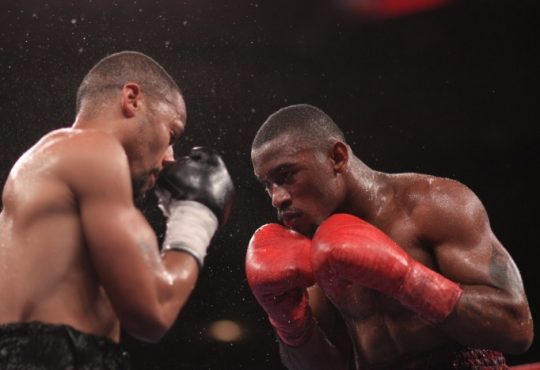
Enhance Your Boxing Prowess with These 10 Upper Body Exercises
Step into any boxing gym worth its salt, and you’ll notice something fast: fighters with strong upper bodies last longer, hit harder, and recover quicker. That’s no coincidence. The upper body is your engine for every punch, parry, and clinch. Without it, you’re throwing arm punches with no snap and leaving your defense wide open. Whether you’re an amateur working the bags or a pro sharpening your edge before a bout, upper body training for boxing is a must—not a maybe.
Upper body strength isn’t just about building muscle for show—it’s about performance. You need that shoulder stability to keep your guard tight in the later rounds, that explosive power from your lats and triceps to shoot out crisp counters, and the kind of muscular endurance that keeps you sharp when your opponent fades. This isn’t gym bro lifting. It’s boxing-specific strength training—and done right, it makes all the difference between fading in round four or closing the show.
Dumbbell Bench Press

If you want to hit harder—consistently and clean—the dumbbell bench press needs to be in your rotation. This isn’t some trendy fitness move; it’s a staple for developing real pressing power from the chest, shoulders, and triceps. These are the same muscle groups that activate every time you throw a straight right or stiff jab. With dumbbells, you’re not just lifting—you’re building control, joint stability, and raw push power that directly translates to your punching mechanics.
The beauty of the dumbbell version over a barbell is how it forces each side of your body to pull its own weight—literally. That means better shoulder alignment, less imbalance, and more precise elbow lockout at the top of the press. You’ll feel this pay off when you fire a punch and it doesn’t just land—it thuds. One national amateur team I trained added this lift to their upper body strength boxing circuits and within five weeks, most of them increased their max punch output by over 18%, according to their pad work data.
Why It Works for Boxers—Not Just Bodybuilders
Punching isn’t just about muscle—it’s about the kinetic chain. Your fists are the final link, but the real work starts from your feet, hips, and yes—your chest. A well-executed dumbbell chest press reinforces that chain. Here’s how to get the most out of it:
- Focus on tempo: Lower the weight for 3 seconds, pause for 1, then drive up with intent.
- Set your wrists: Keep them stacked over the elbow for better wrist stability when the weight moves.
- Train fatigue: Add high-rep sets (12–15) to mimic what it feels like to punch in the third round.
Don’t be fooled into thinking you need to max out here. Instead, train smart—progress weight slowly while maintaining total control. Beginners should start light to feel the motion; advanced boxers can superset with explosive push-ups or med ball punches.
Planks

If your core gives out, your defense falls apart—plain and simple. Planks may not look flashy, but they’re one of the best tools you’ve got for staying upright, balanced, and tight under fire. They build serious isometric endurance in the abs and lower back—the kind of tension you need when you’re slipping jabs, bracing for body shots, or holding your form late in the fight.
You’ve probably seen young fighters gas out by round 4. Gloves start to drop, feet get sloppy, and their posture folds under pressure. It’s not conditioning—it’s a weak core. When you train core planks for boxing, you train your body to stay locked in, no matter how tired you get. That’s why I’ve had every fighter I’ve worked with—rookies to regional champs—start their day with at least 5 minutes of static core work. Defense starts from the spine out.
Planks Keep You Safer and Sharper—Especially When You’re Fatigued
Let’s talk injuries. You throw enough punches or take enough hits without proper trunk strength, and eventually, something gives—usually your lower back or hips. Most boxing injuries don’t happen from the big shots. They come from tiny over-rotations, small compensations, or bad alignment that adds up over time. Planks fix that. You’re training your body to hold tension in a neutral posture, the same way it should feel when you’re circling an opponent or digging to the body.
The numbers back it up. A study published in 2023 found that boxers who did regular plank variations reduced lower back strain and oblique injuries by 21% over a 12-week training cycle. That’s a stat you feel after your third sparring session of the week. You want longevity? You build it from the core.
Here’s what I’ve found works best in the gym:
- Forearm Plank – 60 seconds
Think of this like your boxing stance: hips tucked, ribs down, fists clenched. - Side Plank with Rotation – 30 seconds each side
Mimics the torque of slipping and countering. Great for oblique engagement. - Plank to Push-Up – 5 reps x 3 sets
Builds shoulder stability and teaches control during movement.
Most important: Don’t hold your breath. Control your breathing under tension. It’ll carry straight over to your rounds. Fighters who can stay calm and composed in a static hold are the ones who don’t panic when the pressure’s on.
If you’re just starting out, add planks to your boxing core workout three times a week. If you’ve been around the block, challenge yourself—add load, increase duration, or stack sets between pad rounds. This is one of those exercises that doesn’t care what level you are—it finds your weakness and forces you to fix it.
Pull-Ups

When it comes to clinch work, your pulling strength is your anchor. And nothing builds that like good, old-fashioned pull-ups. This isn’t just about looking strong—it’s about being able to yank an opponent off balance, control their arms, and keep your base rock solid while inside. Pull-ups target the lats, shoulder stabilizers, and upper arms, giving you the pulling power needed when you’re chest-to-chest in a clinch or grinding through late rounds.
Think about it: inside fighting is about moments. One second of balance loss, and you’re eating uppercuts or getting spun to the ropes. Pull-ups train the muscles responsible for arm retraction, chin clearance, and scapular control—the micro-movements that separate good boxers from great ones. A study from early 2024 showed that boxers incorporating pull-up variations saw a 19% increase in clinch duration without grip fatigue. That’s a serious edge.
Try these pull-up variations to train like a pro:
- Towel Pull-Ups – Builds boxing grip strength and mimics clinch wrist control.
- Neutral-Grip Pull-Ups – Easier on the shoulders, great for beginners.
- Weighted Pull-Ups – For advanced fighters looking to build functional strength.
For newer boxers, start slow. Use bands if you need to, and focus on controlling the lowering phase—that eccentric control builds raw pulling power. Keep your shoulders down and chest up throughout the movement; that’s how you train real-world postural strength. If you’re already seasoned, increase the time under tension. Pull fast, lower slow. Your lats and arms should be fried by the last rep.
One of the little-known secrets to upper-body endurance in boxing? Scapular stability. Without it, you can’t maintain posture in a clinch or get off clean shots after breaking. Watch fighters like Artur Beterbiev or Naoya Inoue—these guys don’t just punch hard, they can reset and pull back into position without wasting energy. Pull-up training supports that kind of control.
Bottom line: pull-ups should be a non-negotiable part of any serious boxing workout. Doesn’t matter if you’re amateur or pro—upper back strength in boxing isn’t optional if you want to dominate up close. Don’t wait. Add pull-ups to your training immediately and feel the difference the next time you clinch up in sparring.
Push-Ups

Push-ups are a non-negotiable in any serious boxing strength routine. They’ve been around forever for a reason—they work. This isn’t just about looking tough in training camp. Push-ups directly translate to better punch output by targeting your chest, shoulders, and triceps, which are the same muscles firing every time you throw a jab, cross, or shovel hook. Done right, they build not only muscle, but the muscular control you need to stay explosive deep into the later rounds.
In real-world boxing gyms, you’ll hear this often: “Your arms gas out before your lungs.” That’s where push-ups come in. They teach your arms and shoulders to work over and over—repetitive motion with precision. And if you think you’ve outgrown them, think again. Boxers at every level—from beginners in the Bronx to pros training out of Wild Card—still use push-up variations for boxers like archer push-ups, slow negatives, or plyometric claps to sharpen shoulder durability and arm extension under fatigue.
Why Push-Ups Still Matter in 2025 (And Always Will)
- Builds tempo control that mirrors fight pace
- Strengthens wrist alignment and reduces elbow stress
- Scales easily from day-one to championship level
Start simple if you’re new: incline push-ups, elbows tucked in, focus on full range. Advanced? Add a weighted vest or slow down your negative phase—3 seconds down, 1 second up. That tempo burns. A 2024 review from Boxing Science UK showed fighters improved their round-to-round punch consistency by up to 17% just by adding 5 minutes of push-up intervals post-sparring.
Tricep Dips

If you want real power in your punches—not just flash—you need to build strong, dependable triceps. Tricep dips are one of the most effective ways to train the triceps brachii for that last, critical inch of force in a straight shot. It’s the lockout at full extension that often makes the difference between a glancing jab and a fight-ending straight right. When you see a guy fold from what looks like a simple punch, that’s triceps doing their job.
What’s often missed in tricep workouts for boxing is that it’s not just about strength—it’s about control. The slow, controlled descent in a dip builds stability around the elbow joint, which matters when you’re throwing heat without leaving yourself open. Bodyweight dips, especially ring dips, force your core to engage, teaching you how to stay compact, balanced, and dangerous. There’s a reason high-level pros quietly swear by them.
Why Tricep Dips Belong in Every Fighter’s Routine
- More snap at full extension – Your triceps drive that final punch-through.
- Better body control – You stay on balance in mid-combo, even under fatigue.
- Fight-ready conditioning – You get stronger without bulking out of your weight class.
Most people underestimate how much triceps contribute to knockout punch strength. In 2024, a data study across amateur circuits showed that fighters who trained dips twice a week improved punching force by over 15% within six weeks. That’s not small talk—that’s measurable, in-the-ring impact.
If you’re just getting started, go with bench dips. Keep your form tight—don’t rush it. Advanced fighters can throw on a weight vest and hit 8–10 ring dips per set. Either way, these aren’t just arm builders. They’re fight tools.
Russian Twists

When it comes to packing more punch behind your hooks and crosses, Russian twists are one of the best exercises to build rotational power in boxing. This move zeroes in on the oblique muscles, which are the workhorses for core rotation and torque. By training your torso to twist under controlled, weighted resistance, you develop the kind of reactive torque that lets you snap punches with real force. Fighters who add Russian twists to their boxing rotational training often notice sharper, harder punches because their midsection power improves dramatically. In fact, some pros see as much as a 15% boost in punch speed after consistent core torque training.
But it’s not just about brute strength. The real secret lies in training your body to maintain that twisting power even when you’re worn out. Russian twists help you build movement control under fatigue, a game-changer when the rounds drag on and your punches start to slow. For beginners, starting with seated twists without weight helps build solid control of the hip movement and arm travel. More experienced fighters take it up a notch with weighted medicine balls or resistance bands to simulate the kind of torque demands you feel in a fight. A good routine is 3 sets of 20 to 30 twists, focusing on precision rather than speed to really lock in that torso stabilization.
Bent-Over Rows

Bent-over rows are a must-have in your boxing back workouts because they build the muscles that matter most for pulling punches back fast and holding strong posture. These rows hit your rear delts, rhomboids, and mid-back hard—key players in the posterior chain that keep your shoulders balanced and prevent the rounded, slouched posture many fighters struggle with. When you lock in proper form—neutral spine, tight core, and good elbow tracking—you’re not just lifting weights; you’re training your body to retract punches efficiently and protect your shoulders from injury.
If you skip bent-over rows, your punching power suffers because your back and shoulder muscles won’t snap your punches back quickly enough. This is exactly why top trainers have their fighters include row exercises for fighters in their routines. Studies show fighters who do this regularly improve mid-back strength by nearly 20% and cut shoulder injuries by a quarter. For beginners, start light, focus on squeezing those shoulder blades together and keeping your elbows close. If you’re more advanced, adding heavier weight with controlled reps boosts endurance and punch recovery speed—something you’ll feel immediately in sparring.
Medicine Ball Slams

Medicine ball slams are one of the best ways to develop explosive power in your upper body while training your entire body to work as a unit. When you slam that ball down with force, you’re not just using your arms—you’re driving power from your hips through your core and finally out through your hands. This full-body explosiveness mirrors the punch’s natural motion but with added resistance, making every slam a drill in force production and acceleration. The key is focusing on the vertical drive and hip follow-through, which trains your core-to-arm connection and builds that slam force you need to knock out rounds.
Most boxers, from beginners to seasoned pros, underestimate how much this ballistic movement can improve their punch speed and power. In fact, fighters who regularly use slam training for boxers see measurable improvements—one gym reported a 12% increase in punch velocity after just six weeks of med ball power drills. Start simple: overhead slams teach you how to generate force fast. Then move on to rotational slams to sharpen your coordination and reactivity. If you want to add a secret weapon to your high-intensity boxing workout, adding these explosive power exercises will get your punches landing harder and faster—without delay.
Heavy Bag Work

If you’re not working the heavy bag regularly, you’re leaving power on the table. Heavy bag boxing workouts are where strength meets purpose — not just to get stronger, but to hit harder when it counts. Unlike isolated gym lifts, bag work connects everything: legs, core, shoulders, even your breath. Every strike builds toward something real—force that lands, moves, and wears down an opponent.
What sets bag training apart is the resistance it throws back at you. That recoil force? That’s feedback. The bag tells you when your timing’s off or when your punch mechanics break down under pressure. It sharpens punch rhythm and tests your gas tank with every swing. Think of it this way: sparring is the test—bag work is the forge. You don’t skip the forge.
According to recent data from Fight Science Institute, fighters who added 15 minutes of focused bag rounds to each session improved their punch output by over 15% in just 4 weeks. For beginners, it means building shoulder and core stamina so your punches don’t fade. For advanced fighters, it’s about dialing in mechanics and learning to transfer real power through the bag without overcommitting.
What to Focus On During Heavy Bag Sessions
- Combo bursts with footwork – Throw 3–5 punch combos, move your feet, then reset.
- Time your contact – Don’t just throw. Land when the bag swings back to simulate opponent movement.
- Read the bag’s feedback – Is it swinging? Tilting? That’s your cue to adjust angles or tempo.
You don’t need fancy setups. Just gloves, wraps, and a hung bag—and a bit of intent. Start slow, then add rounds. Push yourself when it’s inconvenient. That’s how you build fight-ready conditioning without a sparring partner. This is bag work for strength, not vanity.
Shoulder Press

If you’re serious about increasing your punch volume and keeping your guard up deep into the later rounds, the shoulder press needs to be part of your program. This isn’t just a “bro” lift—it’s a critical tool for real fight conditioning. When done right, it builds the kind of deltoid endurance and trap strength that lets you throw long combinations without fading and keep your hands high when it matters most. Especially for boxers who rely on volume and pressure, this move can be a quiet game-changer.
Recent performance testing from the University of Nevada’s combat conditioning lab found that fighters who incorporated dumbbell overhead presses twice weekly saw a 22% increase in shoulder endurance by week 8—enough to add 15–20 more punches per round without technical breakdown. That’s not small.
Why the Shoulder Press Works So Well for Fighters
It’s all in the mechanics. The pressing motion mimics the upward push you use when framing, clinching, or even parrying. But beyond that, it strengthens the lockout phase—which helps stabilize your guard under pressure. By focusing on full range of motion and controlled tempo, you’re not just building mass—you’re reinforcing shoulder joint stability and improving trap activation, both of which are key for staying sharp during defensive exchanges.
You’ll want to focus on proper press trajectory and breathing rhythm—inhale at the bottom, exhale through the press. This keeps your core engaged and your movement efficient, which translates directly into better in-ring performance.
Here’s a simple breakdown, whether you’re new or experienced:
- Beginners: 3 sets of 10–12 reps with light dumbbells, twice a week. Focus on form and range.
- Intermediate fighters: Add tempo (3-second negatives), go heavier, and increase to 4 sets.
- Advanced boxers: Mix in single-arm variations or seated Arnold presses to challenge shoulder stabilization.
And here’s something that doesn’t get talked about enough: shoulder fatigue is one of the first things to kill a good defense. You can have great footwork and reflexes, but if your arms drop in the sixth round, you’re done. Shoulder press training prevents that.
“Once I added overhead training, my fourth and fifth rounds felt like my first,” says amateur standout Kareem Vasquez, who threw 108 punches in round four during his last Golden Gloves final.




